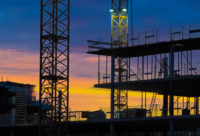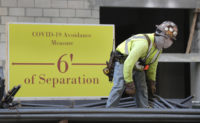As she took the stage at the annual Women’s Leadership Seminar in Greeley, Colo., in May, Shannon Gustine felt inspired by the group of industry women sitting before her. The attendees were eager to hear about her construction career and rise to director of operations at Hensel Phelps. Gustine was proud of the many women in the room. Attendance had grown from a mere handful when she started 22 years ago to more than 400 strong that day.

Over the past 10 years, the National Association of Women in Construction says the industry has seen a steady increase in the number of women employed. Although only an estimated 9.1% of the construction industry is made up of women, that number is on the rise, and for good reason. Following the lead of other industries, the construction world is starting to understand the benefits of a diverse employee base. A recent study by McKinsey indicated that companies ranking in the top quartile of executive-board diversity were 35% more likely to outperform others financially. Two heads are always better than one, but the more diverse the heads, the better the bottom line.
“The concept of a true team with different skill sets and expertise coming together to produce a great building is not a small undertaking and brings great reward,” said Gustine. “Having young women identify construction as their passion and making it their career should be, as with any other field, encouraged and embraced.”
Business professors Cristian Deszö of the University of Maryland and David Ross of Columbia University studied the impact of gender diversity in S&P’s Composite 1500 list, analyzing the financial performance of firms. Their research concluded that female representation in top management led to an average increase of $42 million in firm value.
Company review website Glassdoor reported that more than two-thirds (69%) of all executives rate diversity and inclusion as an important issue, up from 32% in 2014. The AEC industry is not only listening to these key statistics, but as Gustine says, embracing them.
More and more companies are creating dedicated leadership programs and providing a positive atmosphere for their female team members. Participants in these programs are encouraged to share challenges and successes in the field and embrace mentorship opportunities—inspiring one another to achieve what was rarely possible a few short decades ago. In addition to privately funded programs, women across the country have formed their own support channels, offering additional networking and development opportunities for industry peers. Organizations like the National Association of Women in Construction and Women in Construction Operations (WiOPS) are dedicated to the success and advancement of women within the industry, creating a community for one another with dedicated chapters across the country.
“When a group of seven of us started WiOPS five years ago, we never imagined it would be what it is today,” said Shaabini Alford, vice president of project management and design-build for Murray Co., and the current president of WiOPS. “We have over 1,400 registered members. This growth, along with increasing attendance at events, tells us that our industry is motivated and eager to increase the number of women.”
“There has never been a better time to be a woman in construction.”
– Ciara Seger
Companies are vocalizing their increased support, actively participating in movements and providing monetary support to women’s causes. Women in Construction Week, dedicated to building awareness and emphasizing the growing role that women play in AEC fields, has become an annual campaign for most construction companies, who allocate additional marketing dollars to show their support of women in the industry.
The documentary “Hard Hatted Woman,” a feature-length film about women breaking down gender barriers in construction trades, has been openly backed by companies like Turner, Dragados USA, SMACNA and Structure Tone.
If the support of the AEC industry isn’t enough to attract young women, perhaps the sheer growth of the industry will speak to them. According to the Associated Builders and Contractors, construction is expected to grow by 3% in 2019 and another 3% in 2020. That includes an additional $50 billion in construction spending, with 323,000 newly created jobs, a number that could grow to almost two million by 2021.
Not only are increased job openings readily available for women, but also the average compensation for construction jobs is better and more equal compared to many other industries. Across all industries and markets, women in the U.S earn an average of 81.1% of what their male counterparts make. However, in the construction industry, the gender pay gap is much lower. The Bureau of Labor Statistics reports that women in construction earn an average of 95.7% of what men make—an 18% pay bump compared to other industries.
There has never been a better time to be a woman in construction. AEC companies are embracing diversity and working to close the gender gap. Men and women alike should take every opportunity to advocate for their female colleagues, as well as encourage young women exploring opportunities in the AEC profession. The foundation for equality within our industry has been poured, and together we can construct a world built by men and women—working side by side.





Post a comment to this article
Report Abusive Comment